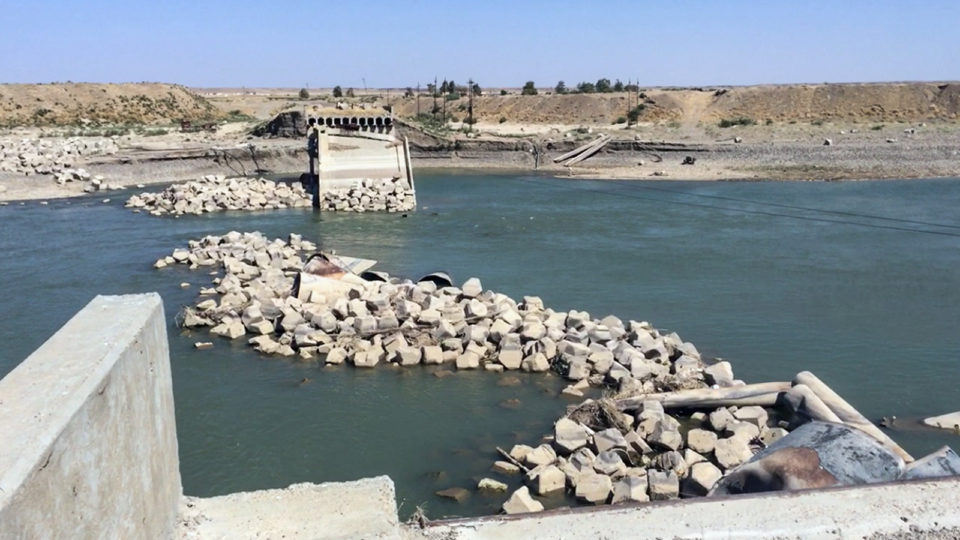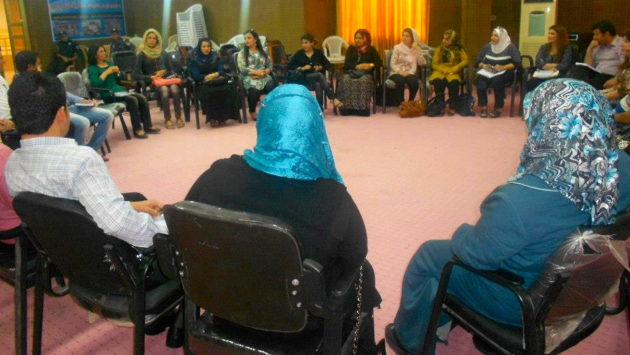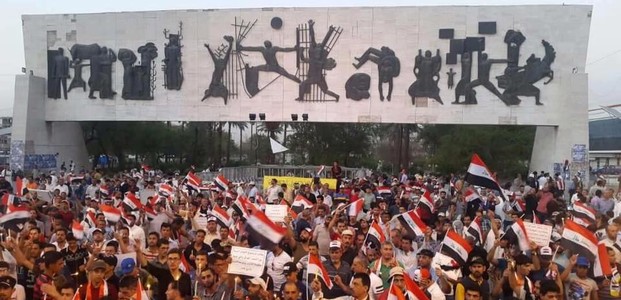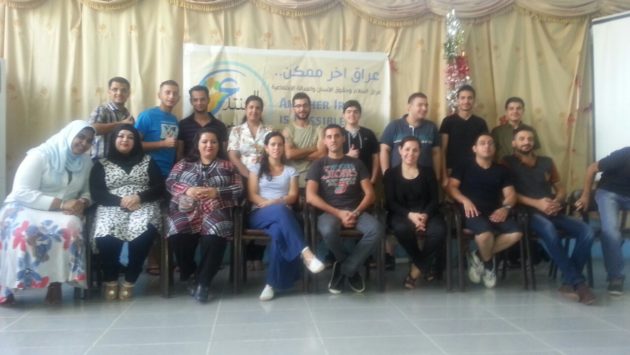The decision maker and those responsible for the Makhool Dam (1.3)
Ismael Dawood
July 2022
The ramifications caused,as a result of the Iraqi Government’s decision taken at the beginning of 2021, to resume construction of the Makhool Dam on the Tigris river, north of Saladin Governorate, has prompted a lot of discussions to take place. Reports undertaken show negative consequences that will result from building this dam, so there have been a lot of arguments made by those who oppose the Government’s decision to resume construction.
Until recently, it had appeared that the Ministry of Water Resources had backed down a little bit regarding their statements about starting to work on it, suggesting instead they would focus on studying the dam’s site, specifications and impacts.
Regarding the issue at hand, I’d like to ask our dear readers two very important questions which are: In general, how did the Iraqi decision makers responsible for the water issue act?
Secondly, how specifically did they act upon deciding to rebuild the Makhool dam?
Before we start to answer these questions, we must note, we’re about to review the decision maker’s actions, at a time when political quarrels, competition and party affiliations have increased. For this reason, it’s important dear reader, to leave aside any prior judgements on any officials that will be mentioned here. For the same reason, I will only assume prior good intentions by the decision makers, and that whether or not their decisions were right or wrong, their intentions were honorable.
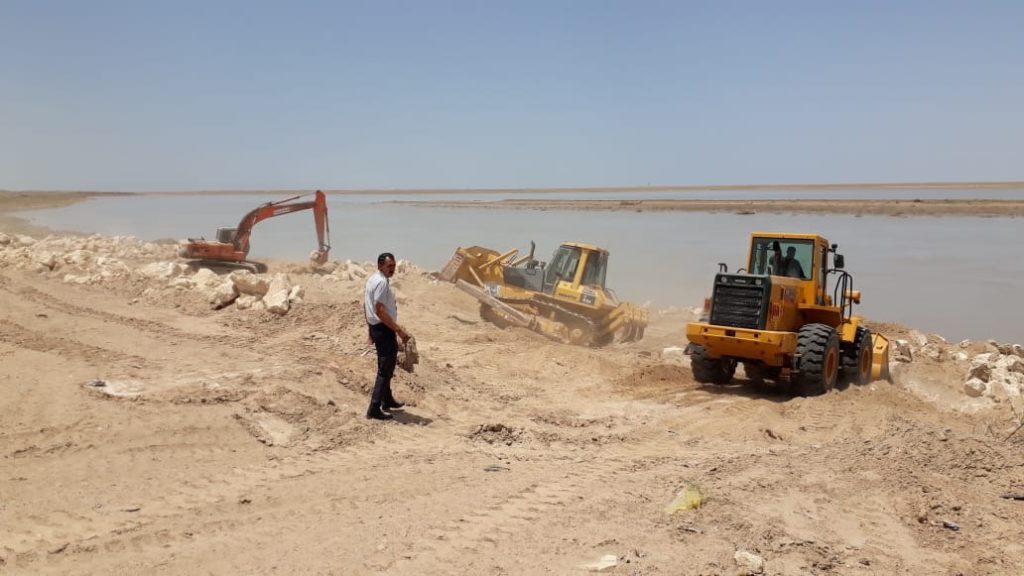
What is going to be tackled here is a review of the decision making process regarding the water issue in general, Makhool dam in specific, with a hope that this trial might contribute in a real way so a calculated decision can be taken to avoid a new disaster visited upon the Tigris river and its beneficiaries.
1- The strategic study for land and water resources in Iraq (SWLRI)
It is known that Iraq has suffered for many years from the “improvised decision”, in which it doesn’t depend on a long-term studied vision to solve its complicated problems. This also applies specifically to the water issue. That is why, when a strategy or a study of a subject points out something important, we should stop and take notice of these findings.
Recently, there has been an idea to establish a specific strategy for Iraq with International Consults. In many cases, the Iraqi decision maker has “enriched” on many levels with this strategy, as if it’s a magic wand that will solve the water issues.
On another occasion, the Iraqi decision maker implied to us that mistakes of the past, were caused by the lack of studied and written visualization, which made it difficult for him to understand the water problems in Iraq, and made him lack the specific details needed to make the right decision. However, is it really that the Iraqi decision maker only needs a written strategy, or is it more than that?
Even though the beginning of the strategic study was supposed to occur after 2015, it has been noticed that the statement of launching this study was only recent, over many events and times, one after another.
In late 2020, the Minister of Water Resources, Mr. Mahdi Rasheed Al-Hamdani, pointed out in a press interview, that the Ministry has made a water strategy plan for Iraq until 2035.2 The Iraqi Ministry of Water Resources’ spokesman, Mr. Ali Radhi, stated in April 2021 the following: “the strategic study for the ministry (2015 – 2035) has been decided and made by foreign companies alongside the relevant sector and ministries to this topic”.3 In August 2021, months after the previous statement, the Iraqi media agency posted a wide title that says “ The Ministry of Water Resources launches a strategic plan until 2035”, and the agency says “ the Ministry has launched today, (12/08/2021) Thursday, along with its strategy to deliver drinking water to villages and towns until 2035”.4
The Minister of Water resources, Al-Hamdani, repeated this subject, in an interview aired on Al-Iraqia TV channel on a programmed called “10 O’Clock” in November 2021.5 Also, during a meeting for Arab Water and Agriculture Ministries in the TV closed circle, he said “ Iraq has a strategic study for water resources and soil made until 2035, and it’s considered a road map to face climate changes under the lack of water, water resources and rain”,6. He has been repeating these statements until this day, and these are only some examples I have given.
It is not clear when this strategy was launched, there are inaccuracies and disparities surrounding the date of the decision and its announcement. As far as I know, there hasn’t been a specific event to announce who made this strategy, how much does it cost, and what is the content of this strategy. The ministry refused to share the strategy document with anyone, whether they were experts or journalists, and maybe this is the main reason for the vagueness and confusion that exists regarding the decision.
The available information confirms that the main work is to update a water document that goes back to 1982, and that Iraq has been working on updating this document since the beginning of the third millennium (specifically in 2004). The information we have also notes they have re- established it with help of international companies and experts, with a cost that might reach almost 33 Million Dollars.
While there is no official statement about all of this, the Minister has said, during an interview that was aired by an Asian TV channel in June 2021, regarding the water crisis, “In 2014 we made a complete study and we have a road map until 2035”. When he was asked if the cost of implementation is 33 Million dollars, he replied “of course not, what’s your pointing out might be the cost of the making study itself but not its implementation”.7
Despite this ambiguity, there’s an agreement between the Iraqi decision makers, across different levels, including many Ministries, on how important this strategy is. There are many who agree that it’s the document that will rule the decision making process, the Minister of Water Resources and his technician staff and consultants.
The study has also been undertaken by other Ministries, not just the Ministry of Water Resources. Naturally, we assume that the subject and its content was discussed, and maybe the national committee for water has decided, as they conduct regular meeting headed by the Iraqi Prime Minister, Mustafa Al-Khadhimi and it includes many relevant ministries.8
The original name of this strategy is “The strategic study for land and water resources in Iraq (SWLRI)”, and recently, there have been some indicators in many events pointing that the decision taken this time will be “strategic”, in comparison with previous decisions.
One could ask, is that really what happened, and we can wonder what the document contains in regards to the matter of building big dams in general and Makhool dam specifically. As I mentioned earlier, the Iraqi government and especially the Ministry of Water Resources, refuses to share the content of this strategy, and according to a private expert source, the reason of this discretion is caused by two reason:
Firstly, due to the fact that the water issue is sensitive and has always been considered one of the government secrets, which is what the Iraqi decision maker has been used to for decades up to now. The second reason is that the Iraqi decision maker doesn’t want to reveal his papers in front of the neighboring countries, especially with ongoing discussion between them.
I, in turn, will add a third reason, being the decision maker, in general, does not commit to the transparency principle even though he enriches himself with it and points it out.9
Therefore instead of presenting this strategic plan, or at least its headlines and selected paths, to the experts and audience, he has left it to the citizens’ imagination and the researchers’ endeavor!
Despite the strong discretion, copies of this study were leaked on several occasions, and according to these leaks, the original document reached up to 135 pages, with a long list of appendices, as well as including a lot of important graphs and tables. Some sub studies accompanied this document, which are also considered very important.
One of them is a document addressed to the International Bank with the headline: “Iraq: water resources and investments analysis: how can the local re customization help in achieving the national management of the water resources’ goals”. This is a document that is divided into 2 sections, the first one has 27 pages about the possible chances and difficulties in Iraq,10 while the second section is specified to study the situation in every Iraqi governorate, covering 83 pages, and it also contains vital graphs and tables.
During the first Baghdad Conference for Water, that was conducted on 13-14 March 2021, the name of the strategy was mentioned and some sections of the resources planning that I mentioned earlier were presented. It was also mentioned that it is important to update this strategy.11
When the discussion started about reconstructing the Makhool dam, in 2021, by the Water Resources Ministry, with the acknowledge of the Ministry of Planning, and the Ministry of Finances, in which they specified the required budget (or a part of it), an important question came to mind: I wonder if the Iraqi decision maker knows that (SWLRI) strategy, which he always enriched and spent millions on, states that in no doubt, Iraq does not need anymore big dams and what it already has is enough when it comes to the water containers, so priority should be given to alternative projects! The document contains very important indicators on the Makhool Dam that shouldn’t be ignored.

We will tackle more details in the second part of this topic, and give information about the development of the situation on Makhool dam and of the SWLRI also.
To be continued…
To read part (2.3), click here.
———————————————————
Written in July
Authur’s Contact: ismaeel.dawood@gmail.com
1 Strategy for Water & Land Resources in Iraq
2 A topic posted on Rudaw on 5 / 1 / 2021 https://www.rudawarabia.net/arabic/middleeast/iraq/050120215
3 Radhi in a discussion to a formal media agency, it was also stated in “Al-Awla News” website on 15 / 04/ 2021 https://www.awla.news/الموارد-المائية-تعلن-عن-تحديث-خطتها-ال/
4 Iraqi News Agency: الموارد المائية تطلق خطة ستراتيجية تمتد للعام 2035 » وكالة الأنباء العراقية (ina.iq)
5 To watch the interview: Facebook Watch
6 Earth News 27 / 1 / 2022: https://earthiq.news/archives/17641
7 To watch the interview on Asia TV Channel (Hamish Show), it was posted on the Ministry of water resources media page: https://ms-my.facebook.com/waterresources2/videos/وزير-الموارد-المائية-المهندس-مهدي-رشيد-الحمداني-على-قناة-اسيا-الفضائية-في-برنامج/275256174370975/
8 Read Al-Sabah Newspaper, posted on Thursday 4th of December 2021, a story on the committee meeting: https://alsabaah.iq/57400/اللجنة-الوطني-ة-العليا-للمياه-تتخذ-عددا-من-القرارات
9 There is more than an indicator on the necessity of involving civil society and experts in the water issues, and that the “new” Iraq is building its decision based on transparency and participation.
10 Iraq: Water Resources Planning and Investments Analysis:
How Local Reallocation Can Help Meet National Water Resource Management Objectives11 The first Iraqi water conference: PowerPoint Presentation (baghdadiwc.com)

